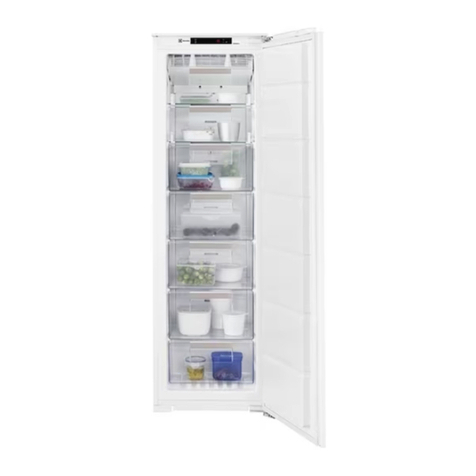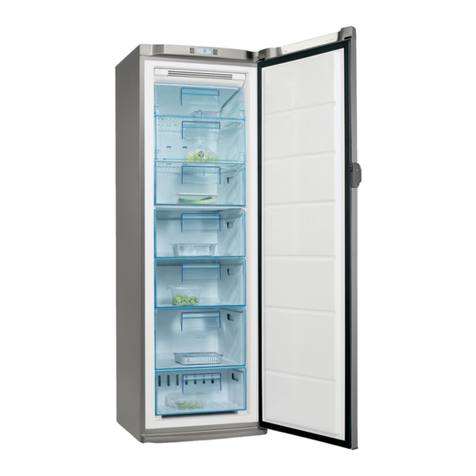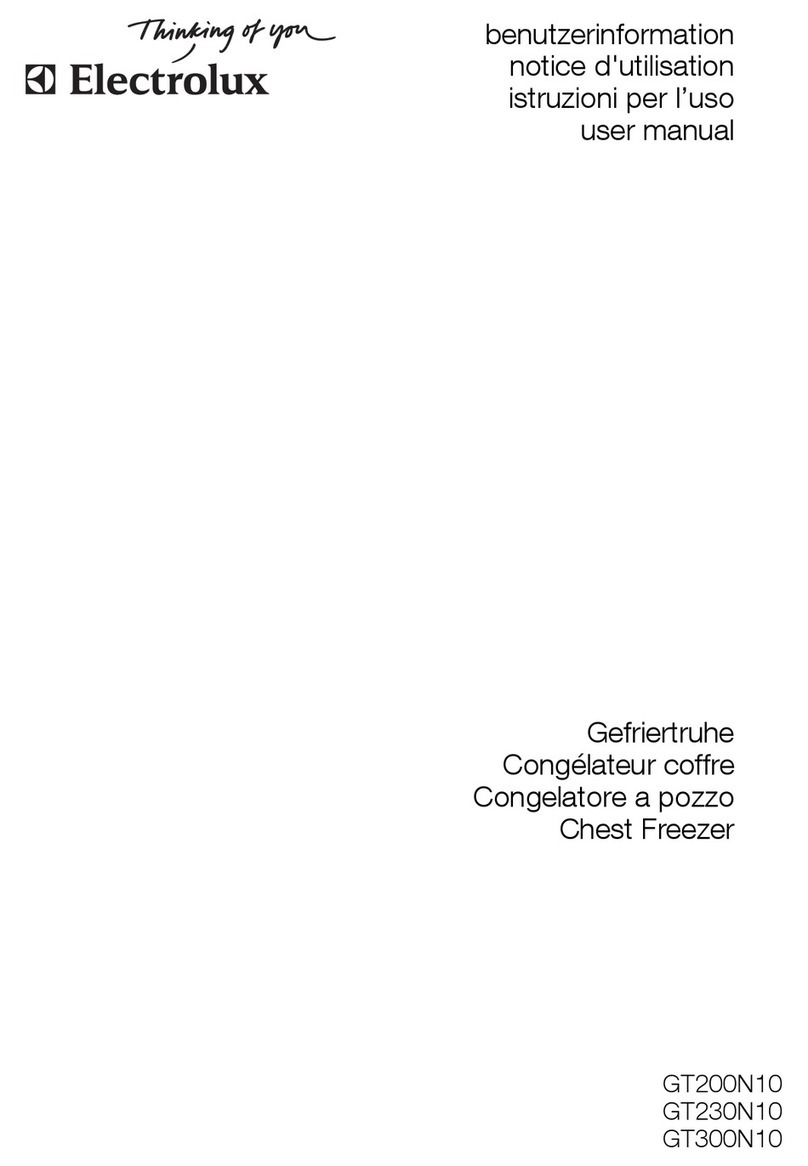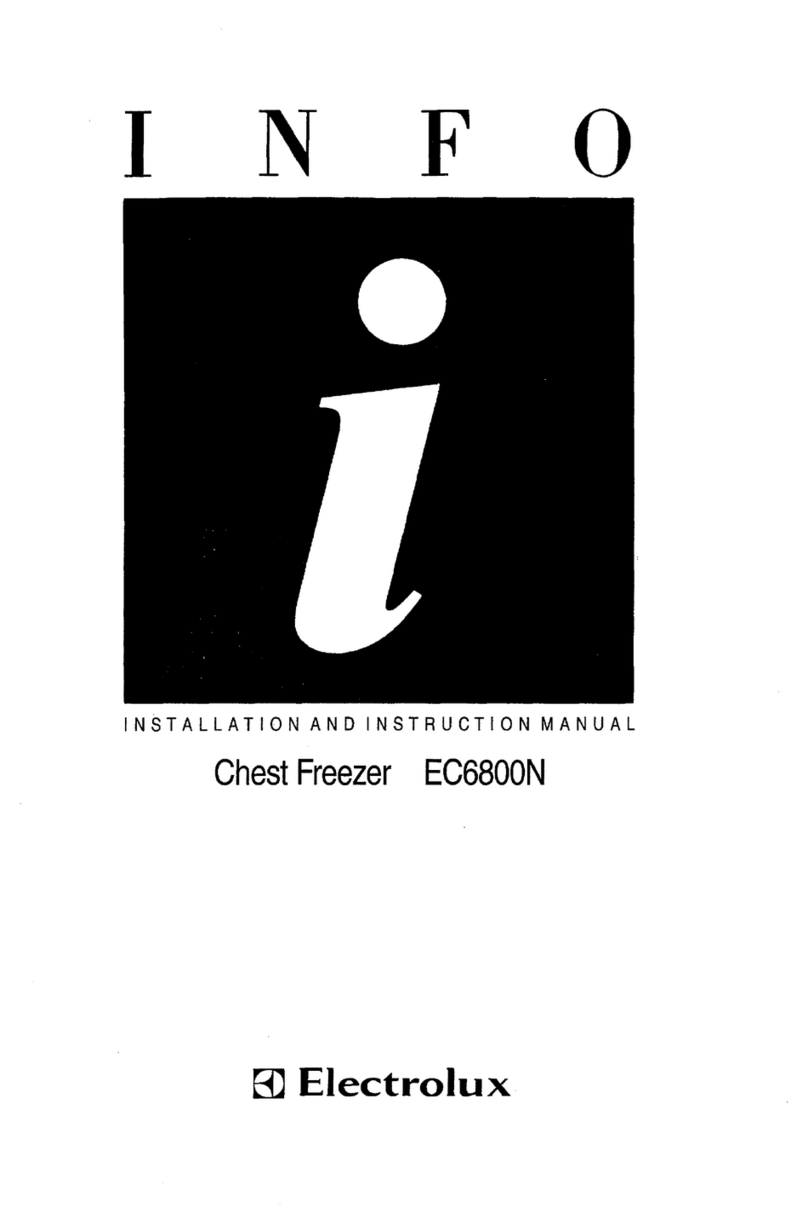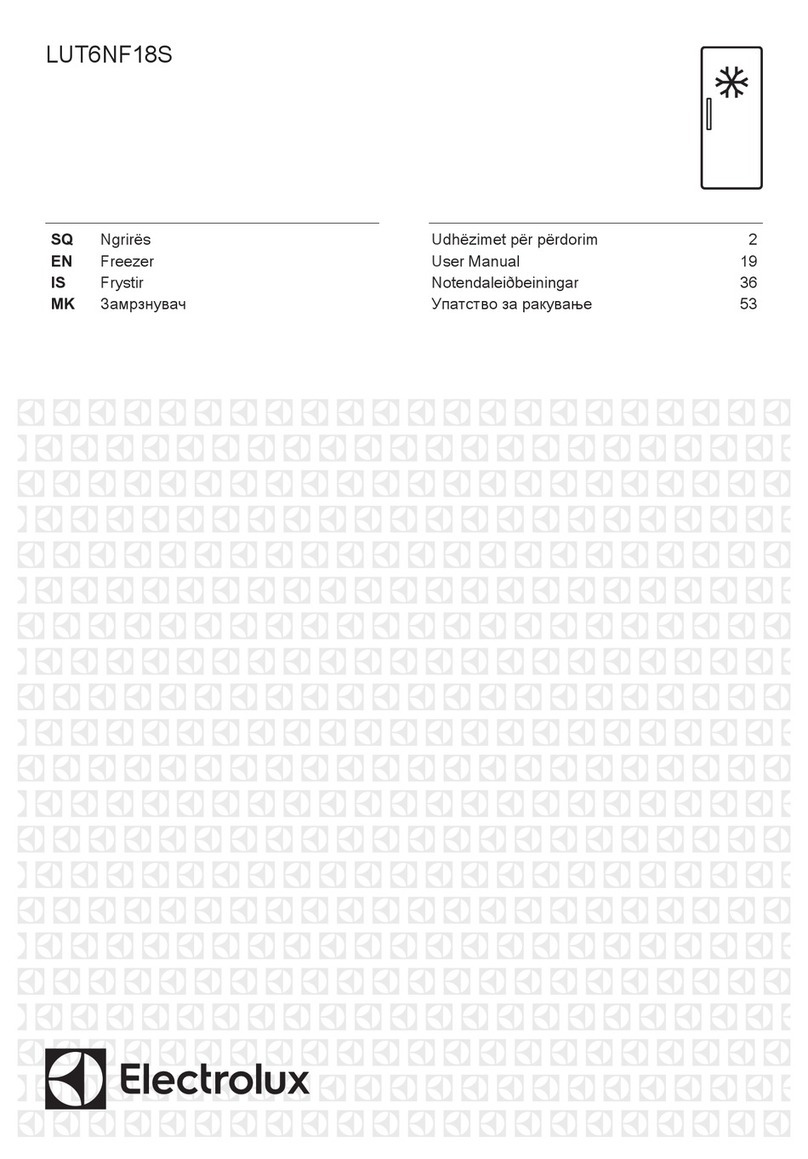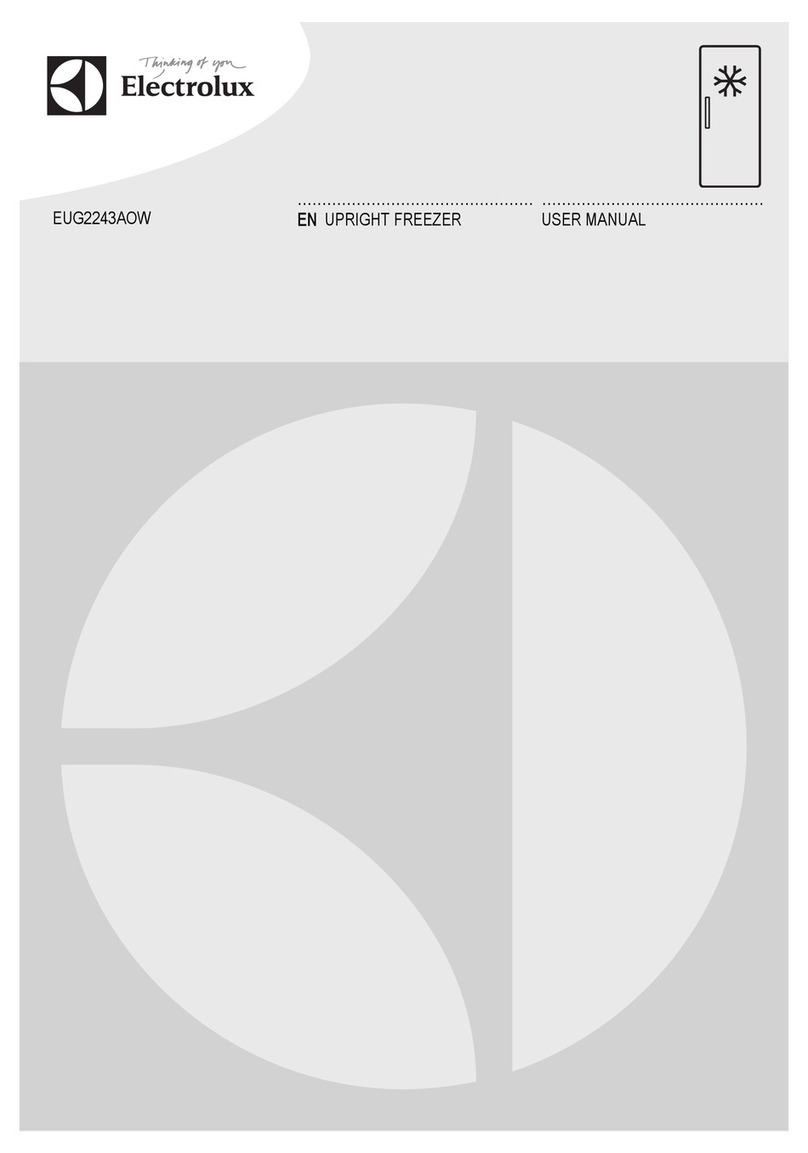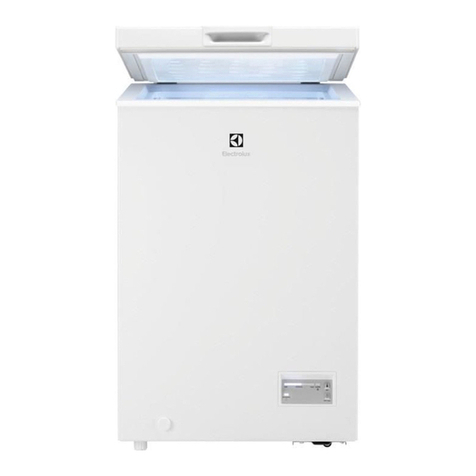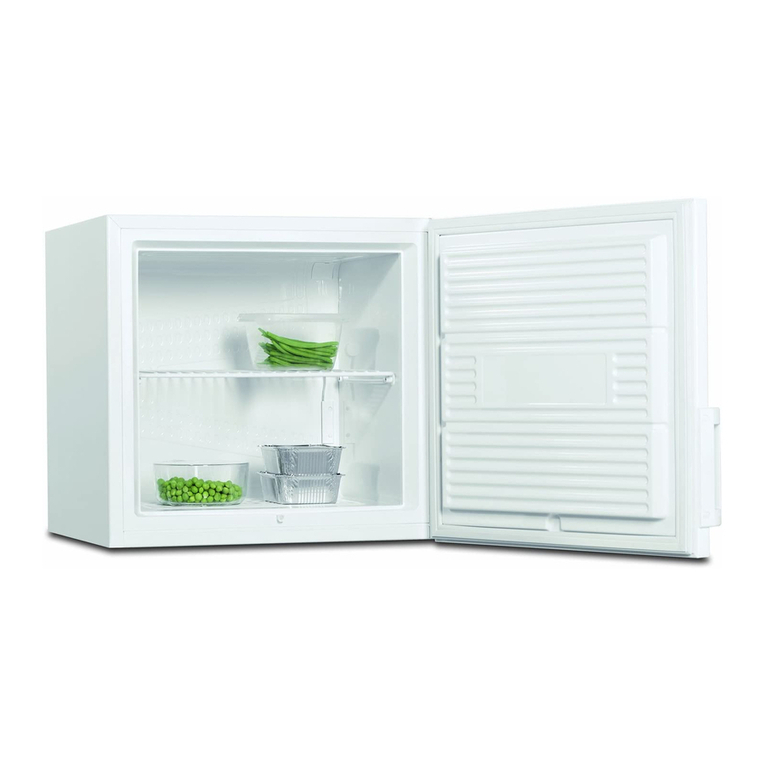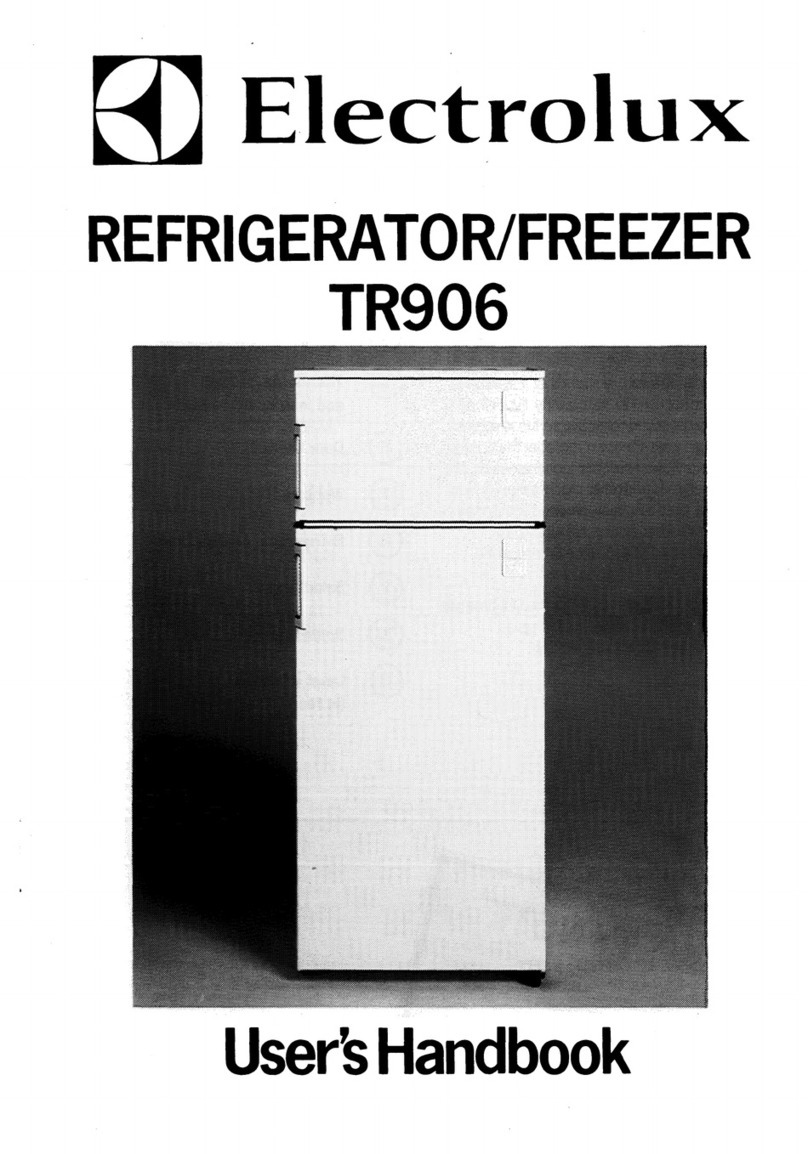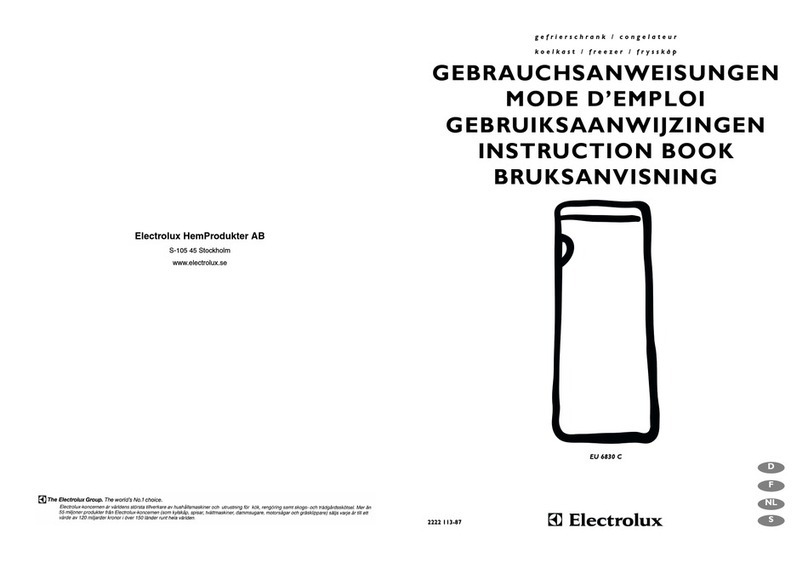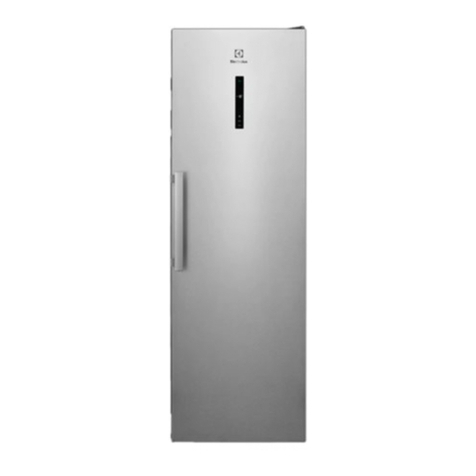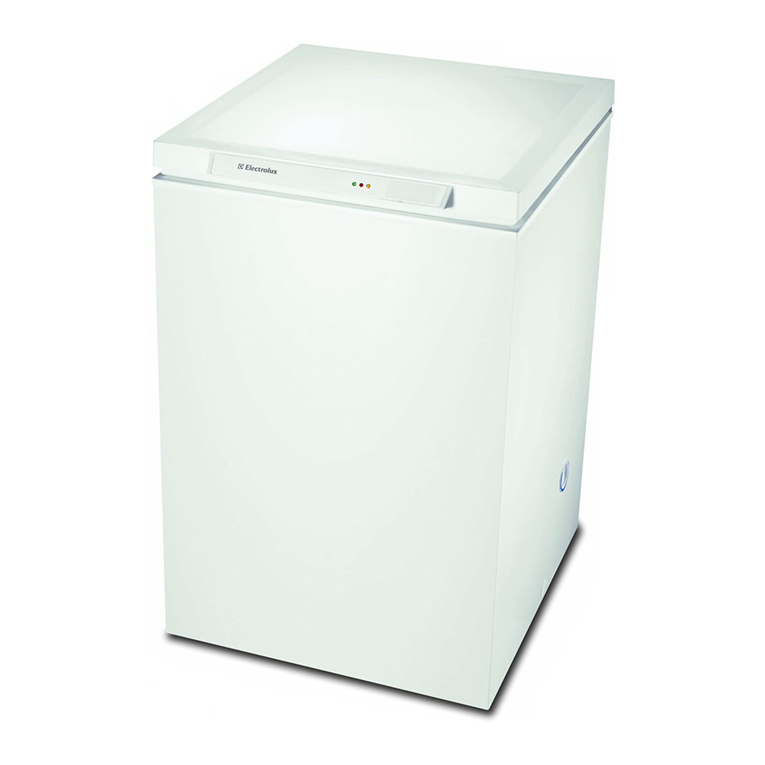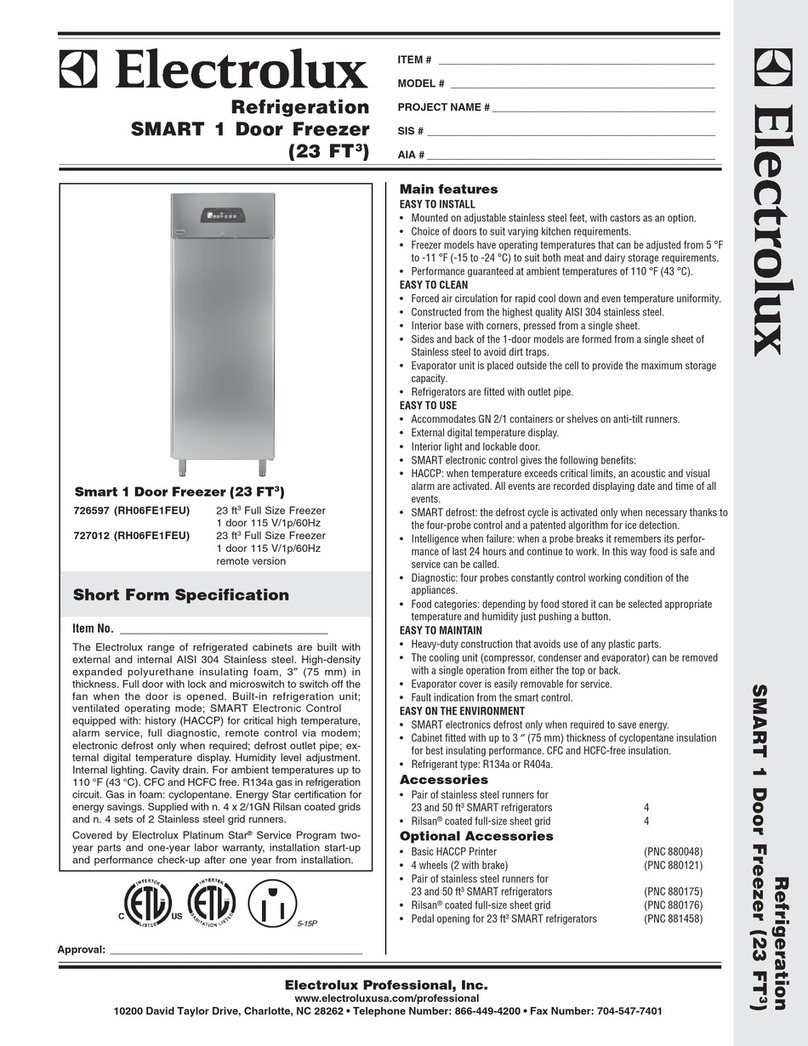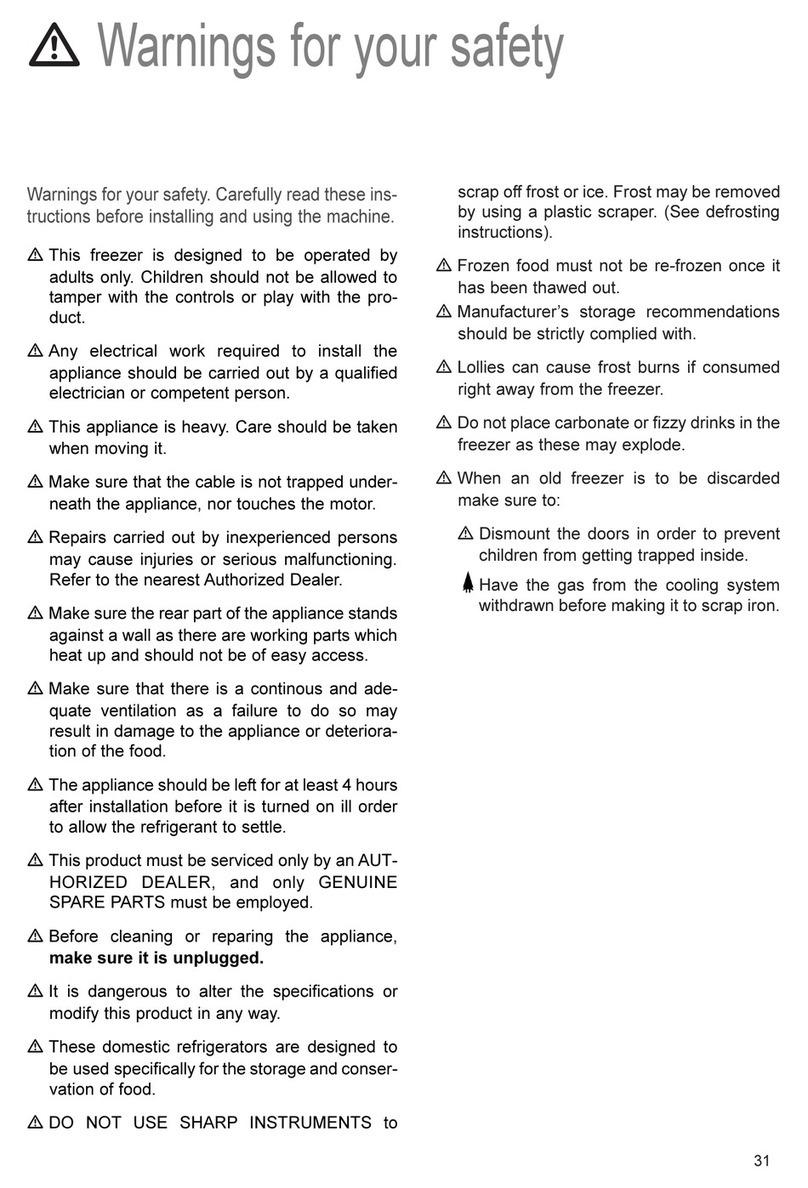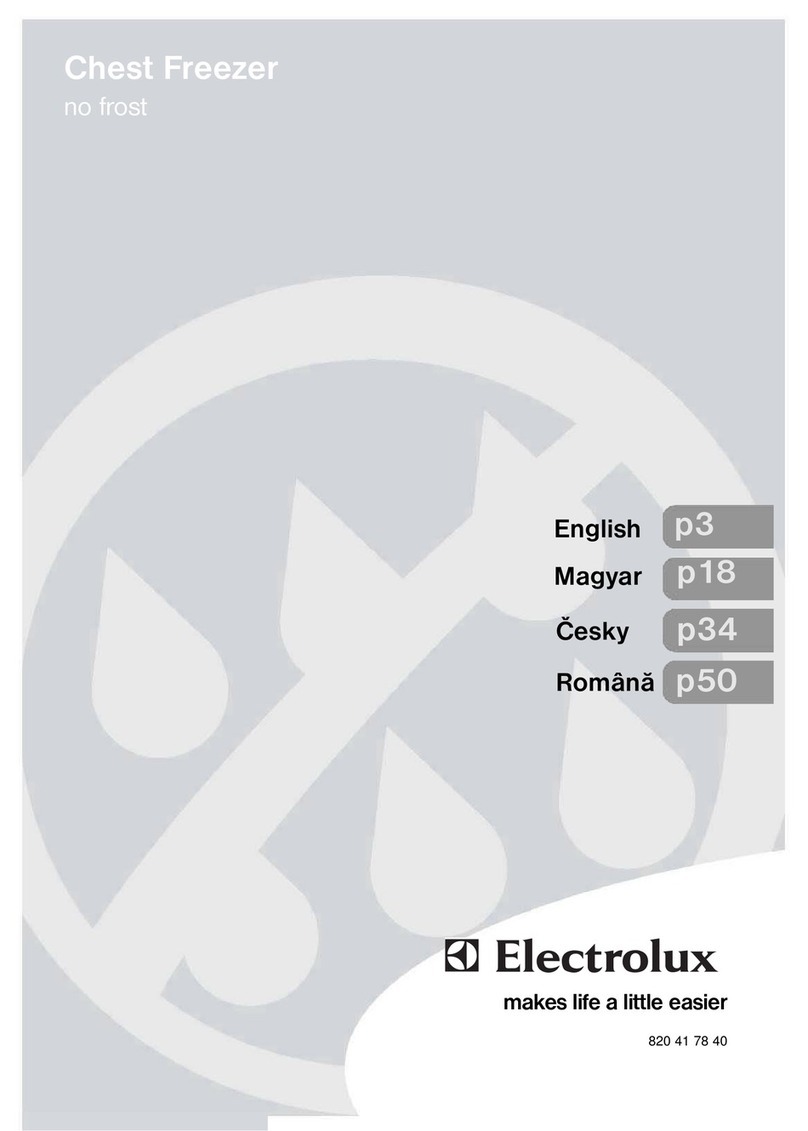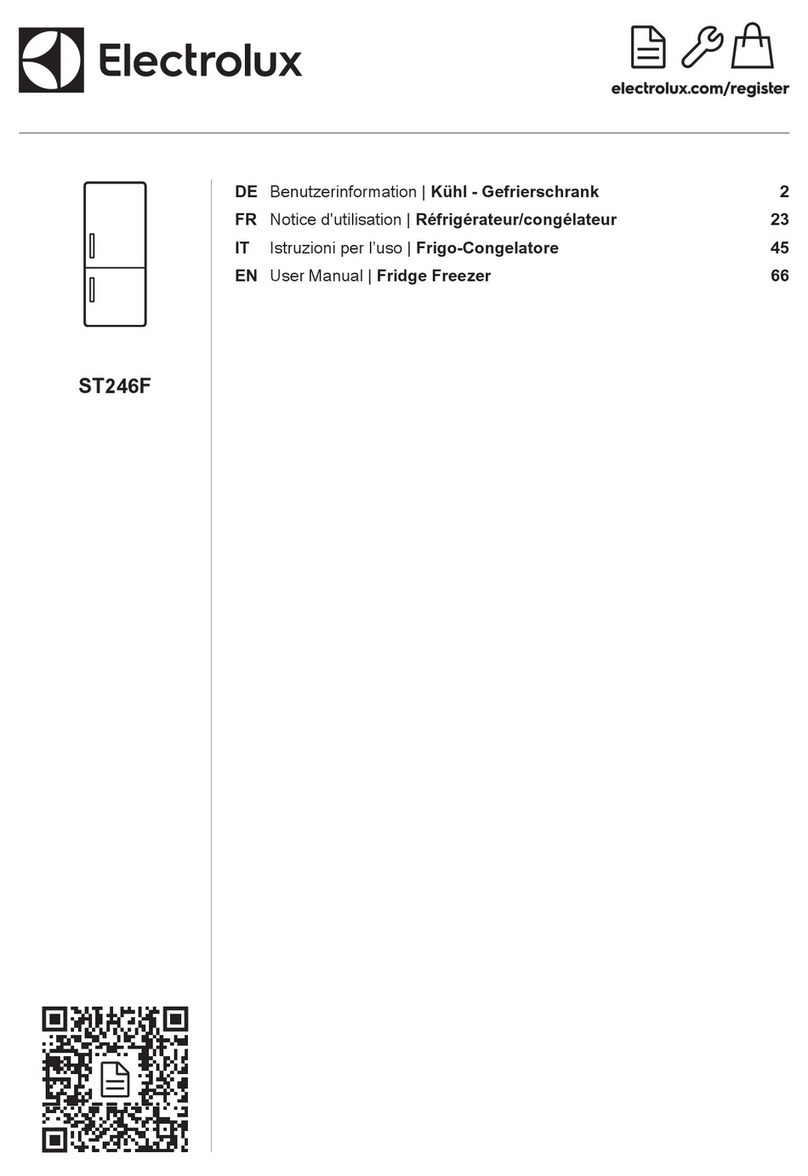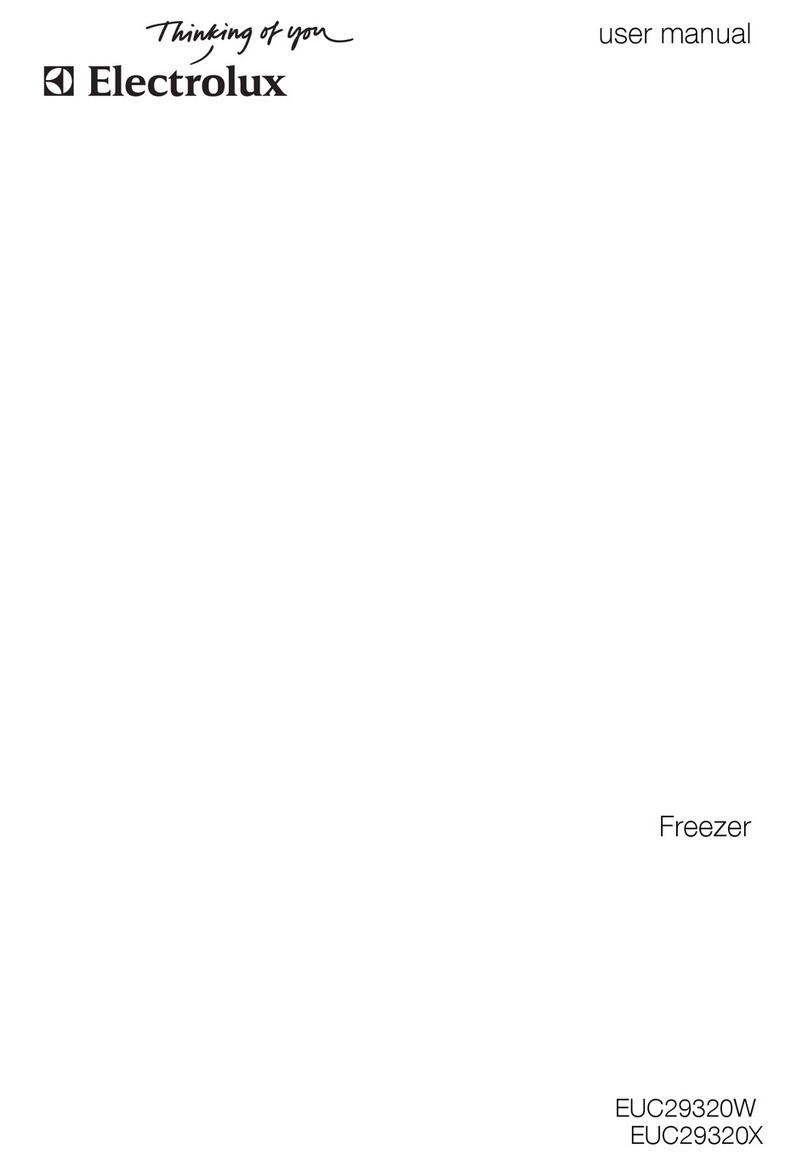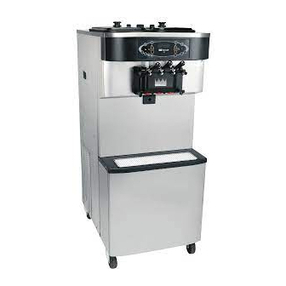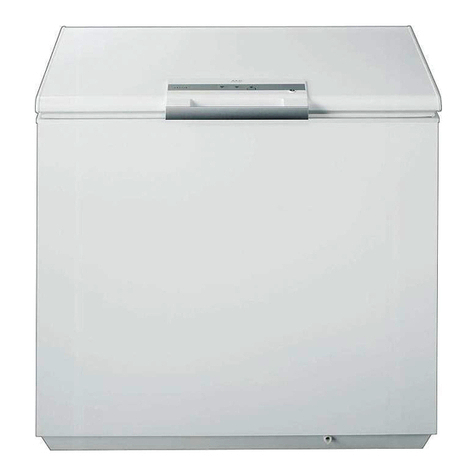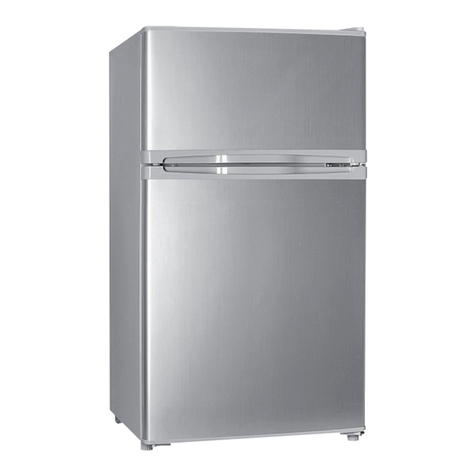7
GB
amounts of food for freezing every day, the capacity
stated is reduced by about one-third.
LOCK (6)
(Not a standard accessory for all models.) The lock works
as shown in the drawings. Remember to keep the key out
of the reach of children.
BASKETS ( )
The baskets are designed for the storage of food which
has already been fro en. The handles can be placed in
two positions, as shown in the drawings.
The baskets can either be placed inside the free er or
hung on the edge of the casing.
HELPFUL HINTS (9)
STORAGE
Fro en food can be stored anywhere inside the
free er, but should be kept at least 5 mm below the
top edge. Never exceed the maximum storage time for
purchased fro en food. When you buy fro en food, make
sure that it has been stored at the correct temperature. Do
not buy products which have wet or damaged packaging.
Place purchased products in your free er as quickly as
possible. We recommend using an insulated bag to bring
such products home with you. Never place bottles, warm
objects, or fi y drinks in the free er.
FREEZING
Only use fresh food of the best quality. Cool hot
dishes to room temperature as quickly as possible
before placing them in the free er. Wrap food carefully in
free er foil, or use the special free er boxes or bags which
are on the market. Divide food into small portions before
free ing - this ensures that free ing is more rapid, and
means that you only need to defrost the amount needed
for immediate consumption. Remember that defrosted
food must not be re-fro en. However, dishes which have
been made using defrosted food may be fro en. Mark the
free er packaging with the date of free ing. We
recommend keeping a record of the contents of your
free er. If free ing is too slow, the quality of the food being
fro en deteriorates. Consequently, do not free e larger
amounts than stated in the free ers data plate. If you wish
to free e food several days in a row, the maximum free ing
capacity stated per day is reduced by about one-third. As
far as possible, keep the lid closed during free ing. If you
know nothing about home free ing, we recommend that
you purchase a book containing advice and guidelines.
DEFROSTING
In general food should not be defrosted at room
temperature, since this increases the risk of
bacteria growth. It is best to defrost large portions of
meat or poultry in the refrigerator, and this also applies to
food which is to be consumed as it is (e.g. fruit, butter
and sliced meat). Small portions of food can be cooked
straight from the free er. A good number of ready-to-
cook dishes can also be cooked without defrosting.
Always observe the instructions on product packaging.
Bread tastes good when defrosted in a moderate oven.
Microwave ovens can be used for the rapid defrosting of
most fro en foods. Observe the instructions for use of
the microwave oven concerned.
ACCESSORIES
Spare baskets can be obtained from your local
Service Centre.
MAINTENANCE
DEFROSTING (8)
The formation of frost on the inside of free ers cannot be
avoided. Frost is formed when moisture contained in the
air comes into contact with the cold surfaces of the
free er.
Consequently, the lid should only be opened when
necessary, and it should never be left open.
A thin layer of ice or frost does not affect the function of
the free er adversely, and can be removed carefully
using the scraper provided.
IMPORTANT
Never use a knife or any other sharp implement to
remove frost.
When the frost or ice layer is 10-15 mm thick, the free er
should be defrosted. We suggest that you defrost your
free er when there is little or no food inside.
Switch off the current. Remove the contents of the
free er, wrap them in newspapers, and leave them in a
cold place.
The speed of defrosting can be increased by placing one
or more bowls of hot (not boiling) water inside the free er
and closing the lid. Open the lid after a while, and remove
the layer of ice carefully.
The defrost water can be collected in a bowl as shown in
the drawing.
Do not try to speed up defrosting by using anything other
than hot water, since this may damage the free er. After
defrosting, clean the inside of the free er.
IMPORTANT
Remember to replace the plug in the drip water drain.
HOW TO CLEAN YOUR FREEZER INSIDE
Remove the plug from the mains socket, and remove all
loose accessories before cleaning the free er.
The best time to clean your free er is after defrosting and
before the electricity supply is connected again.
Use a damp cloth to clean your free er. Use hot water,
and a mild, non-aromatic cleaning agent.
After cleaning the free er, clean the basket/baskets
before replacing them.
IMPORTANT
Never use strong cleaning agents, scouring powder
or strongly aromatic cleaning agents to clean your
freezer inside, since this will damage the inside and
leave a strong smell.



